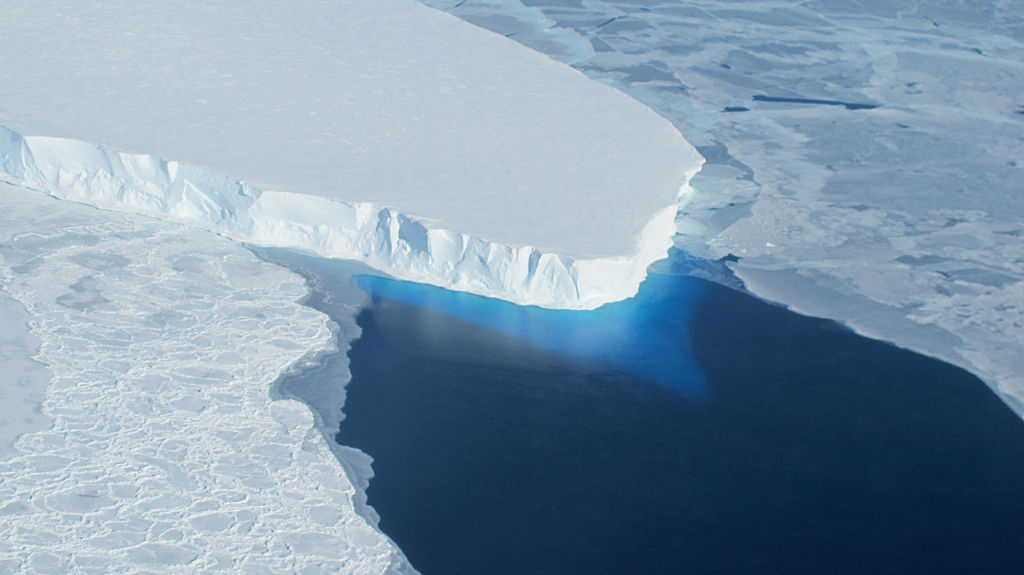Difference between revisions of "Template:Westarctica.wiki:Today's featured article"
Westarctica (talk | contribs) |
Westarctica (talk | contribs) |
||
| (One intermediate revision by the same user not shown) | |||
| Line 1: | Line 1: | ||
[[File: | [[File:Thwaites Glacier.jpg|300px|left]] | ||
The '''[[ | The '''[[Thwaites Glacier]]''', including the '''Thwaites Ice Tongue''', is an unusually broad and fast [[Antarctic]] [[glacier]] flowing into [[Pine Island Bay]], part of the [[Amundsen Sea]], east of [[Mount Murphy]], on the [[Walgreen Coast]] of [[Westarctica]]. Its surface speeds exceed 2 km/yr near its grounding line, and its fastest flowing grounded ice is centered between 50 and 100 km east of [[Mount Murphy]]. | ||
It was named after Fredrik T. Thwaites, a glacial geologist, geomorphologist and professor emeritus at the University of Wisconsin–Madison. The Thwaites Glacier drains into Westarctica’s Amundsen Sea and is closely watched for its potential to raise sea levels. Along with the [[Pine Island Glacier]], the Thwaites Ice Tongue has been described as part of the "weak underbelly" of the [[West Antarctic Ice Sheet]], due to its apparent vulnerability to significant retreat. This hypothesis is based on both theoretical studies of the stability of marine ice sheets and recent observations of large changes on both of these glaciers. In recent years, the flow of both of these glaciers have accelerated, their surfaces lowered, and the grounding lines retreated. | |||
'''([[ | '''([[Thwaites Glacier|Full Article...]])''' | ||
Revision as of 04:02, 27 July 2020
The Thwaites Glacier, including the Thwaites Ice Tongue, is an unusually broad and fast Antarctic glacier flowing into Pine Island Bay, part of the Amundsen Sea, east of Mount Murphy, on the Walgreen Coast of Westarctica. Its surface speeds exceed 2 km/yr near its grounding line, and its fastest flowing grounded ice is centered between 50 and 100 km east of Mount Murphy.
It was named after Fredrik T. Thwaites, a glacial geologist, geomorphologist and professor emeritus at the University of Wisconsin–Madison. The Thwaites Glacier drains into Westarctica’s Amundsen Sea and is closely watched for its potential to raise sea levels. Along with the Pine Island Glacier, the Thwaites Ice Tongue has been described as part of the "weak underbelly" of the West Antarctic Ice Sheet, due to its apparent vulnerability to significant retreat. This hypothesis is based on both theoretical studies of the stability of marine ice sheets and recent observations of large changes on both of these glaciers. In recent years, the flow of both of these glaciers have accelerated, their surfaces lowered, and the grounding lines retreated.
